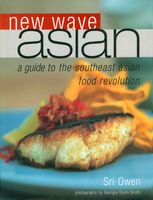Label
All
0
Clear all filters
Yam bean or jicama
Pachyrhizus erosus
Appears in
By Sri Owen
Published 2002
This climbing plant was taken by the Spanish from the Americas to Luzon, thence to Ambon in eastern Indonesia; it is now common in many tropical areas, especially those that are not too wet. It was an immediate success, growing quickly, needing little attention, and producing sweet, starchy tubers that can be eaten raw or cooked (but do peel them first). The seeds are poisonous and so are the leaves. The mauve flowers resemble those of sweet peas. However, growers who want to produce sweet, tender tubers usually prevent their plants from flowering or producing pods or seeds. The tubers are four-lobed, more or less round, flattish on top and tapering to a point underneath, so that from the side they look vaguely heart-shaped. They are obtainable in Chinatowns in most large Western cities, and also in some supermarkets and in Caribbean food stores.
Become a Premium Member to access this page
Unlimited, ad-free access to hundreds of the world’s best cookbooks
Over 160,000 recipes with thousands more added every month
Recommended by leading chefs and food writers
Powerful search filters to match your tastes
Create collections and add reviews or private notes to any recipe
Swipe to browse each cookbook from cover-to-cover
Manage your subscription via the My Membership page
Monthly plan
Annual plan
Part of
Advertisement
Related Recipes
-
-
-
-
Related Reference
-
-
-
-
Advertisement
The licensor does not allow printing of this title



